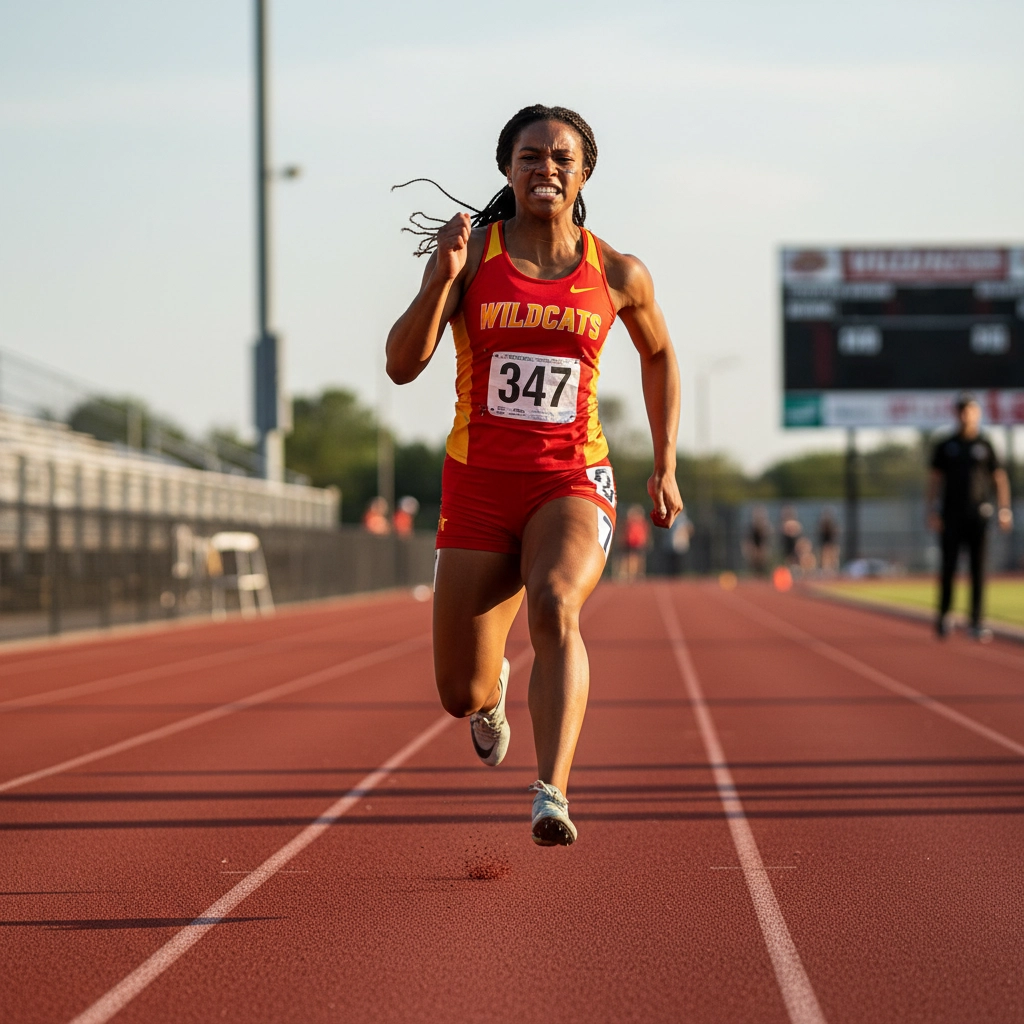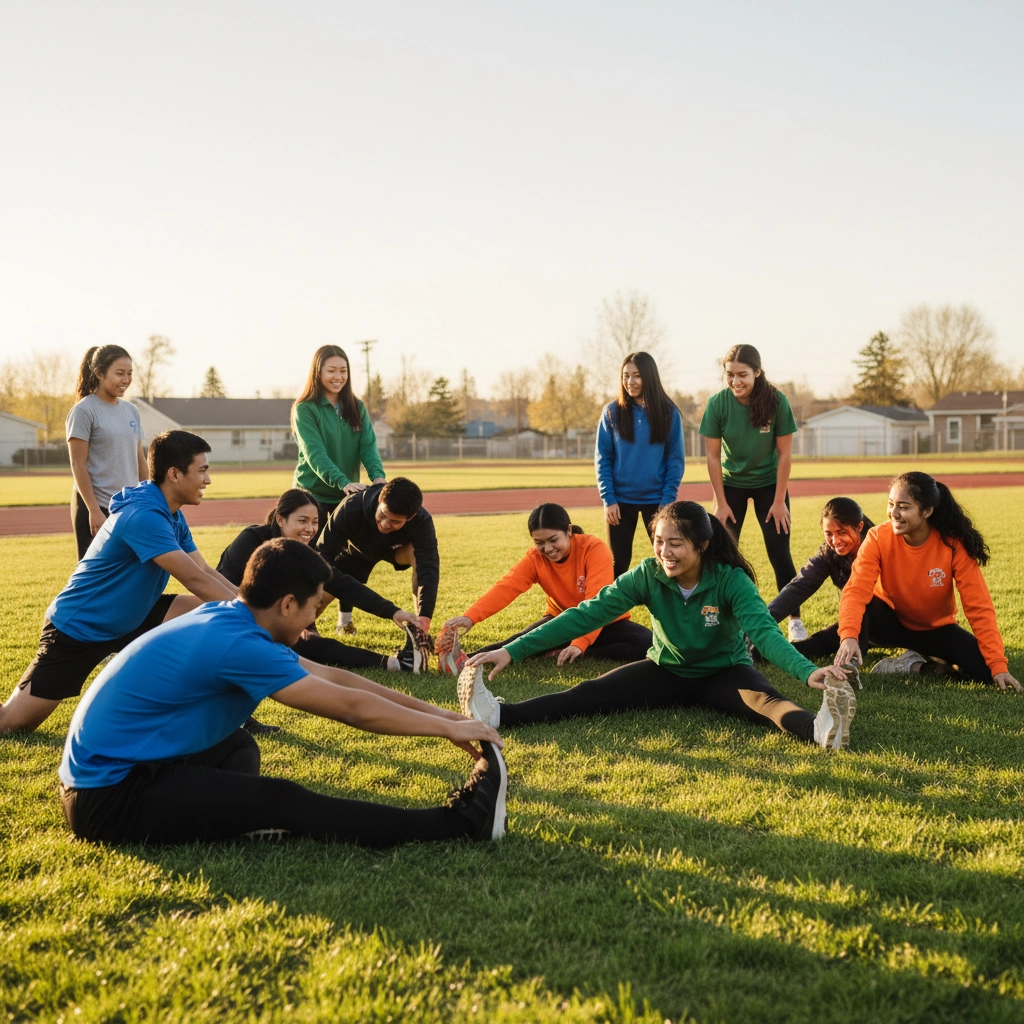Between showcases, campus visits, and maintaining peak performance, the pressure to stay injury-free has never been higher. Yet this is exactly when many young athletes get hurt: when the stakes feel highest and rest seems impossible.
Here's the reality: injuries don't pause for recruitment timelines. But with the right approach, your family can navigate this crucial period while keeping your athlete healthy, strong, and ready to perform when it matters most.
Why Recruitment Season Increases Injury Risk
Recruitment season creates a perfect storm for injuries. Athletes push harder, train longer, and rest less: all while managing academic pressure and recruitment stress. The body doesn't distinguish between "important" training and regular training; it only knows increased load and decreased recovery.
Common recruitment-season scenarios that lead to injuries:
Showcase fever: Cramming training before major events
Multi-sport overlap: Fall cross country bleeding into winter track
Travel fatigue: Weekend tournaments disrupting recovery routines
Performance anxiety: Muscle tension from recruitment stress
Academic pressure: Late nights studying affecting sleep recovery

Understanding these risk factors helps families make smarter decisions about training load and recovery during crucial recruitment periods.
The Foundation: Smart Training Load Management
Effective injury prevention starts with understanding that more isn't always better. During recruitment season, your athlete's training should be strategic, not just intense.
Work with coaches to establish training priorities:
Identify key recruitment events 6-8 weeks in advance
Create training peaks around these dates
Plan recovery weeks between major competitions
Monitor weekly mileage increases (no more than 10% per week)
Track key metrics:
Weekly training volume
Sleep quality and quantity
Energy levels throughout the week
Performance trends in workouts
Parents can help by tracking these metrics outside of practice. Notice if your athlete seems unusually fatigued, complains of persistent soreness, or shows declining performance despite increased effort.
Recovery: The Non-Negotiable Component
Recovery isn't optional during recruitment season: it's when adaptation happens. Athletes who skip recovery don't just risk injury; they risk plateauing at exactly the wrong time.
Daily recovery essentials:
8-9 hours of sleep per night
Proper post-workout nutrition within 30 minutes
Active recovery on easy days (light jogging, stretching)
Hydration throughout the day, not just during workouts
Weekly recovery strategies:
One complete rest day per week
Easy week every fourth week
Regular massage or foam rolling sessions
Stress management activities outside of track

Parents play a crucial role here. Create an environment that supports recovery by maintaining consistent meal times, limiting late-night activities during heavy training periods, and respecting rest days as non-negotiable.
Recognizing Early Warning Signs
Injuries rarely appear overnight: they usually announce themselves through subtle warning signs that families can learn to recognize.
Physical warning signs:
Persistent muscle soreness lasting more than 48 hours
Joint stiffness in the morning
Declining performance despite consistent effort
Changes in running form or stride length
Unusual fatigue during routine workouts
Mental and emotional indicators:
Irritability around training or competition
Loss of enjoyment in the sport
Anxiety about upcoming events
Sleep disturbances
Changes in appetite
When you notice these signs, it's time for an honest conversation with coaches and potentially a sports medicine professional. Early intervention prevents minor issues from becoming season-ending problems.
The Parent's Role in Injury Prevention
Parents often feel helpless during recruitment season, but you have significant influence over injury prevention success.
Nutrition support:
Plan meals around training schedules
Keep healthy snacks readily available
Monitor hydration, especially during travel
Learn your athlete's pre- and post-workout nutrition needs
Lifestyle management:
Enforce sleep schedules, even during busy periods
Help manage academic workload during peak training
Create calm environments for recovery
Monitor social media and recruitment stress
Communication facilitation:
Encourage honest communication between athlete and coach
Ask about pain or discomfort without being intrusive
Help your athlete advocate for their needs
Maintain perspective during setbacks
Injury-Proofing Different Track Events
Different track events create different injury risks. Understanding your athlete's primary events helps target prevention efforts.
Distance runners:
Focus on gradual mileage increases
Prioritize running surface variety
Emphasize core and hip strengthening
Monitor for overuse injuries in feet, shins, and knees
Sprinters and jumpers:
Emphasize dynamic warm-up routines
Focus on power and flexibility balance
Pay attention to hamstring and hip flexor health
Include adequate speed recovery between sessions
Throwers:
Prioritize shoulder and core stability
Focus on proper throwing mechanics
Include rotational power development
Monitor for overuse in shoulders and back

Creating a Support Network
Injury prevention works best when everyone's on the same page. Build a support network that includes coaches, sports medicine professionals, and other track families.
Key team members:
Primary coach (technique and training load)
Athletic trainer or physical therapist (injury prevention and early intervention)
Sports medicine physician (medical clearance and serious injury management)
Mental health counselor (stress management and perspective)
Don't wait until problems arise to establish these relationships. Having trusted professionals in place before recruitment season starts ensures quick access when needed.
Managing Setbacks During Recruitment Season
Despite best efforts, injuries sometimes happen. How families respond determines whether a minor setback becomes a major problem.
Immediate response protocol:
Stop activity immediately if pain occurs
Apply ice and seek professional evaluation within 24-48 hours
Communicate honestly with coaches about limitations
Focus on what can be controlled during recovery
Maintain conditioning in areas not affected by injury
Long-term perspective:
Remember that college coaches recruit potential, not just current performance
Use recovery time for skill development and film analysis
Maintain contact with recruiting coaches throughout recovery
Focus on returning healthy rather than returning quickly
Technology and Recovery Monitoring
Modern technology can help families monitor recovery and prevent overtraining during recruitment season.
Useful monitoring tools:
Heart rate variability trackers
Sleep monitoring devices
Training load apps
Nutrition tracking platforms
However, technology should supplement, not replace, listening to your athlete's body and maintaining open communication with coaches.
Building Long-Term Athletic Development
The best injury prevention strategy extends beyond recruitment season. Families who think long-term create athletes who stay healthy throughout their careers.
Foundational principles:
Prioritize movement quality over quantity
Develop multiple movement patterns and skills
Emphasize gradual progression over quick fixes
Balance sport-specific training with general fitness
Maintain perspective on the role of athletics in overall development

Remember that recruitment is just one phase of your athlete's journey. Choices made during this period should support their long-term health and development, not just immediate performance goals.
Moving Forward with Confidence
Recruitment season doesn't have to be synonymous with injury risk. Families who prioritize smart training, adequate recovery, and open communication create environments where athletes can perform at their best when it matters most.
The key is starting these practices before they're needed. Don't wait until your athlete is injured or exhausted to implement injury prevention strategies. The best time to focus on these fundamentals is right now: before the pressure peaks and the stakes feel highest.
At Recruit My Game, we understand that successful recruitment requires more than just performance videos and statistics. It requires healthy, confident athletes who can sustain excellence over time. That's why we support families in taking a comprehensive approach to recruitment: one that prioritizes long-term development alongside immediate goals.
Your athlete's health is their most valuable asset during recruitment season. Protect it with the same intensity you bring to training and competition, and you'll give them the best chance to achieve their collegiate athletics dreams.


